Overhead Badminton Forehand Stroke
If you’re a beginner, learn how to perform this stroke first before proceeding to learn other types of badminton shots.
In badminton, this stroke generates the most power. The power of a badminton forehand stroke comes from correct technique, NOT how much strength you exert into a swing. The larger the swing motion, the more momentum generated. Hence, more power.
Therefore, the KEY to generate power in any badminton shot is to make a complete swing in your strokes.
In fact, it is INCORRECT to use too much strength for your badminton forehand stroke. When you focus on power, you’ll most likely get the technique wrong. That means the quality of your shot will be poor!
Tutorial
Imagine yourself throwing an object forward as far as possible. That’s similar to the proper technique of badminton forehand stroke.
1. Preparation Phase
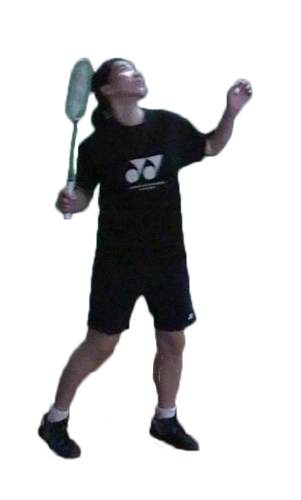
Adopt the forehand grip and the attacking stance The picture above shows you the position an attacking stance.
2. Aiming Phase
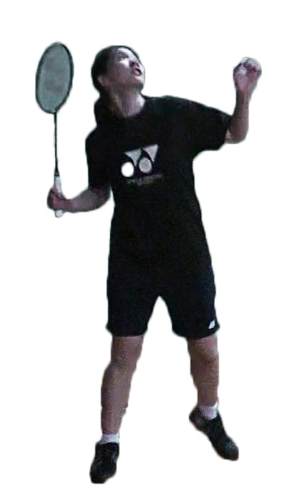
Your body should face sideways, not the front. Move your racket arm towards the back and extend your chest to the widest extent possible to ensure you can do a full swing. Inhale (breathe in) as you stretch/extend your chest to the widest extent. This helps you feel more comfortable.
Lift up your non-racket arm (see picture above) as you stretch your racket arm towards the back. The non-racket arm plays an important role in maintaining body balance. Body balance is VERY IMPORTANT in badminton. Without good balance, there’s no way you can execute the correct technique for this stroke.
3. Preloading Phase
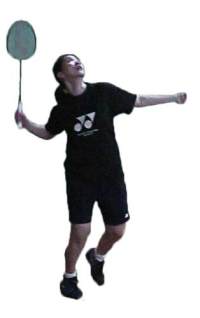
When you’re about to perform your stroke, stretch out your non-racket arm (straighten it). Stretch out your non-racket arm in a natural motion. Avoid swinging it forward. Once your non-racket arm is straightened (see picture above), swing your racket arm forward.
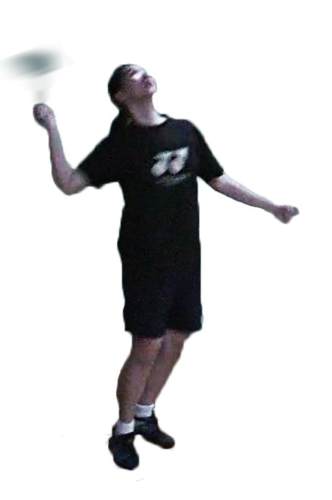
Your swing should be one smooth downward motion. Perform a full arm swing to generate maximum power. As you swing your racket forward, your non-racket arm should naturally return to your body (see picture above).
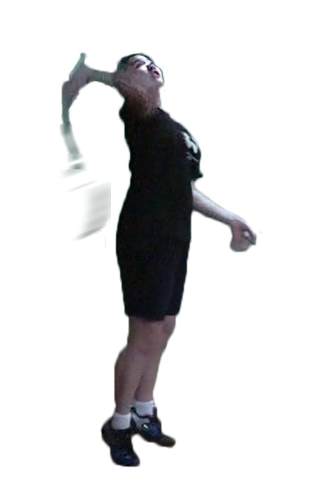
After you make contact with the shuttle, FOLLOW THROUGH with the swing. DON’T stop half way! In other words, swing all the way down even after you’ve hit the shuttle. Also, as you swing your racket, slightly rotate your waist from the side to the front. This helps give extra power.
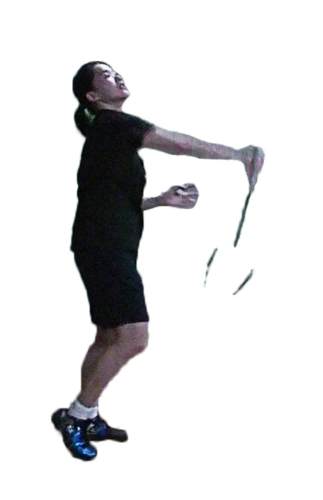
When you complete a full swing, your body should be facing the front (no longer facing sideways). Your racket should end up at the lower front area of your body.
Your racket arm should follow through further and the end position will have your racket arm slightly downwards.
At this point, you should also have your body balance maintained.
Important Tips/Advice
- Avoid exerting too much strength into your forehand stroke. Too much strength result in poor technique and lost of body balance.
- Complete a full swing to ensure maximum power in your stroke. Extend your chest to the widest extend for this purpose.
- Allow your racket to FOLLOW THROUGH (continue performing the swing even after you’ve hit the shuttle).
- Pay extra attention to the NON-RACKET ARM. It helps you maintain body balance and makes you feel more comfortable while performing your badminton swing.
- Most importantly, feel comfortable while performing your forehand stroke. If you don’t, something must be wrong. Review the steps above again.
Please Like me on Facebook. Thanks!

Tell me what you think!
What do you think about what you just read? Leave me a comment below.